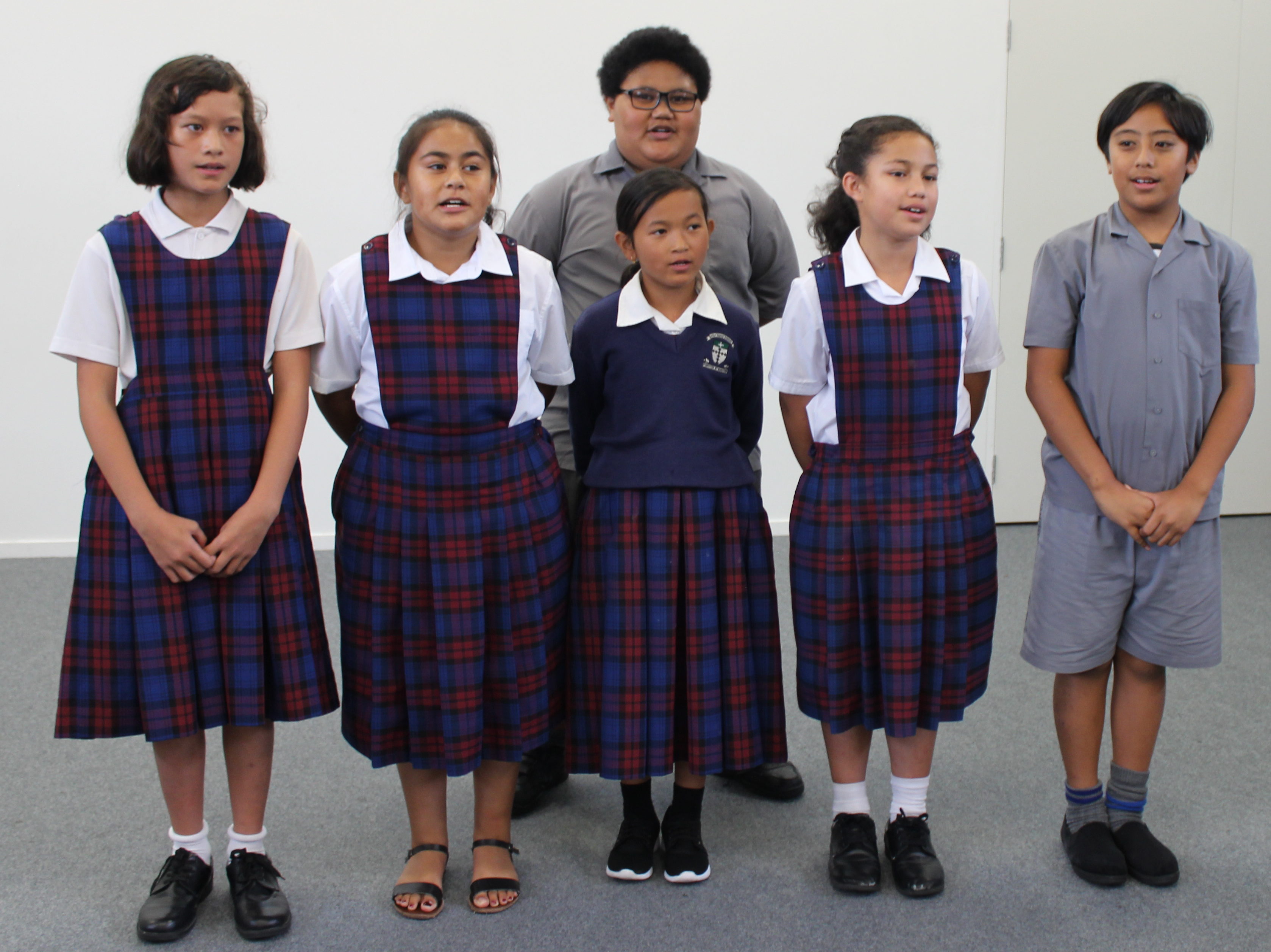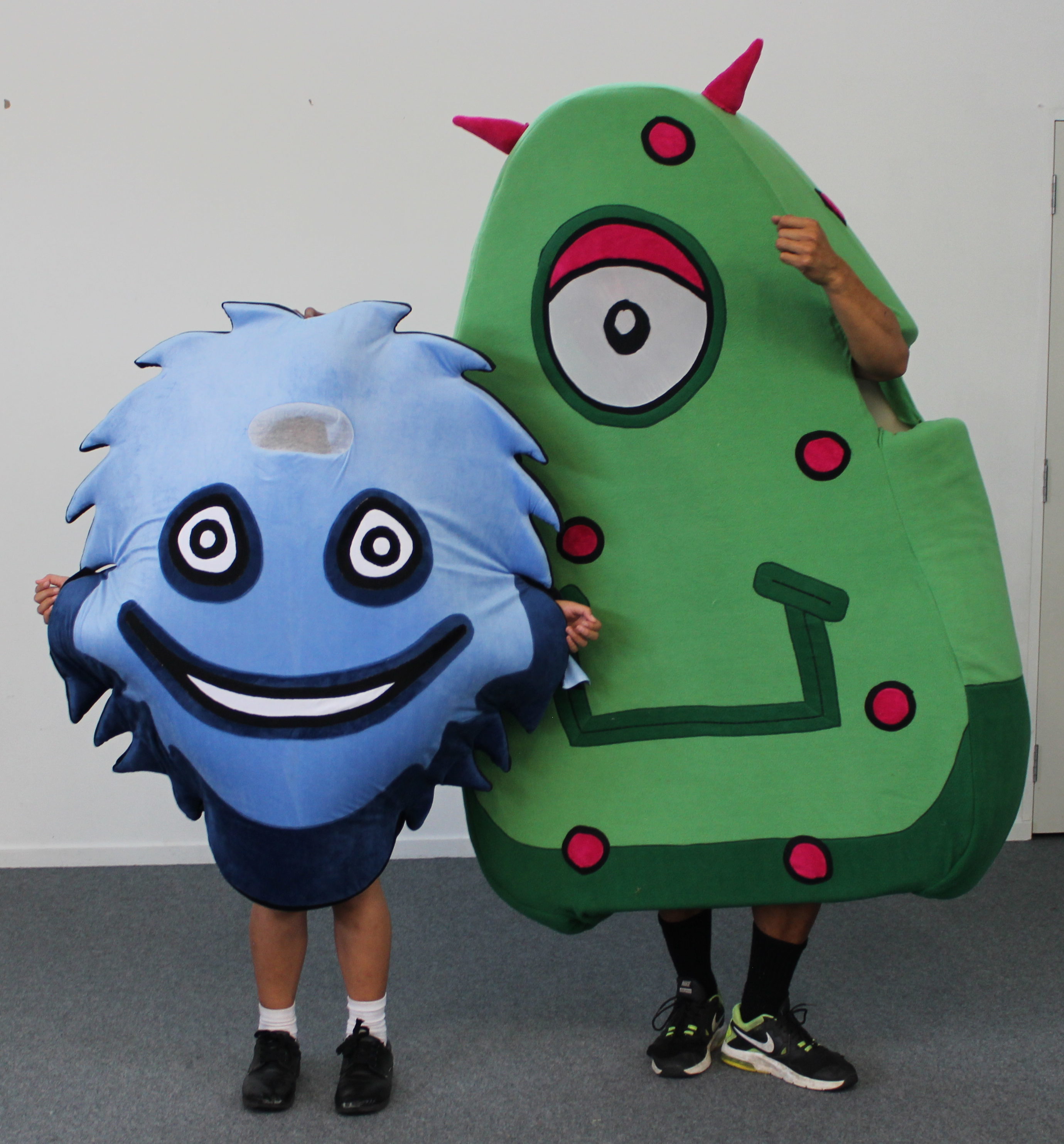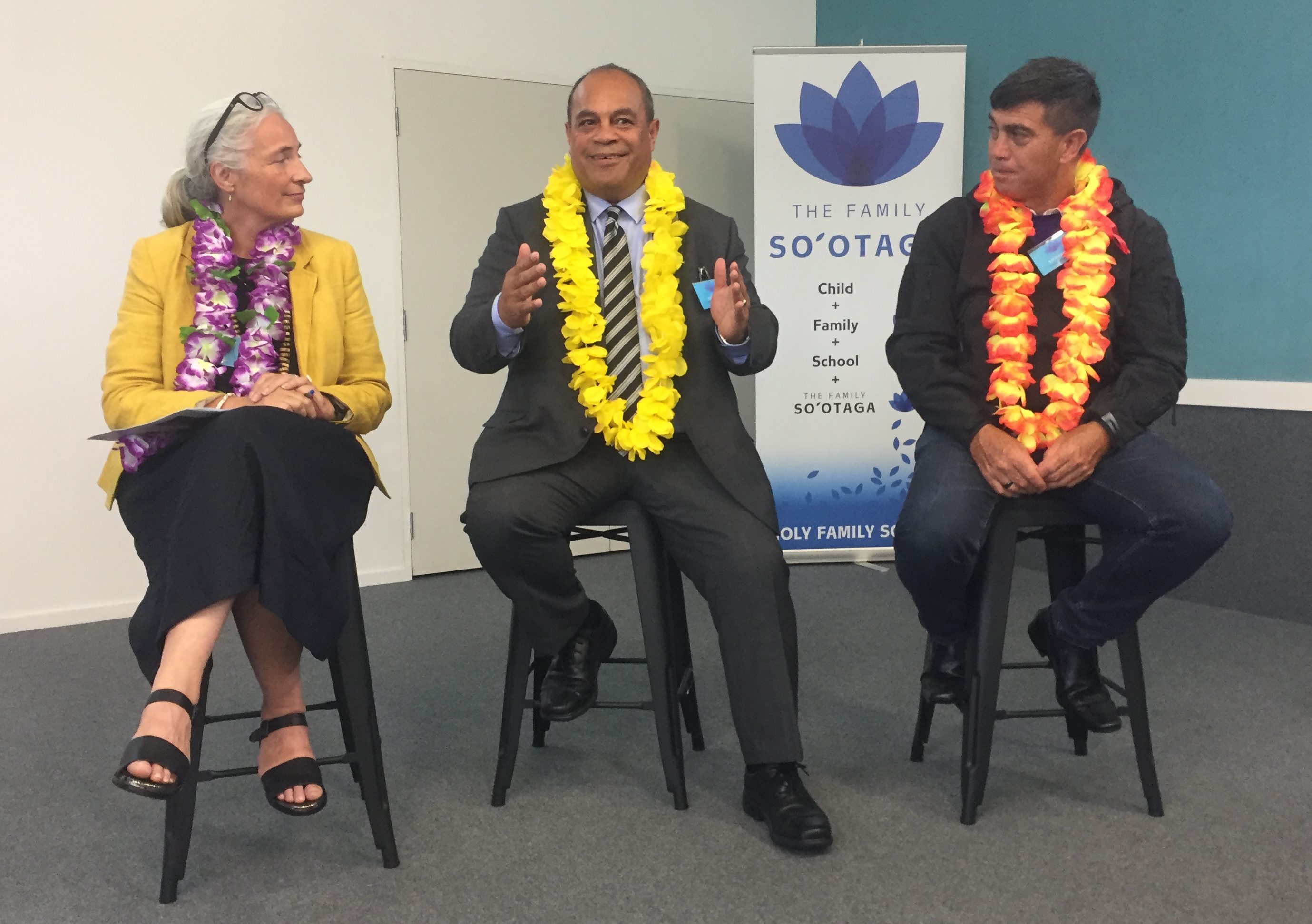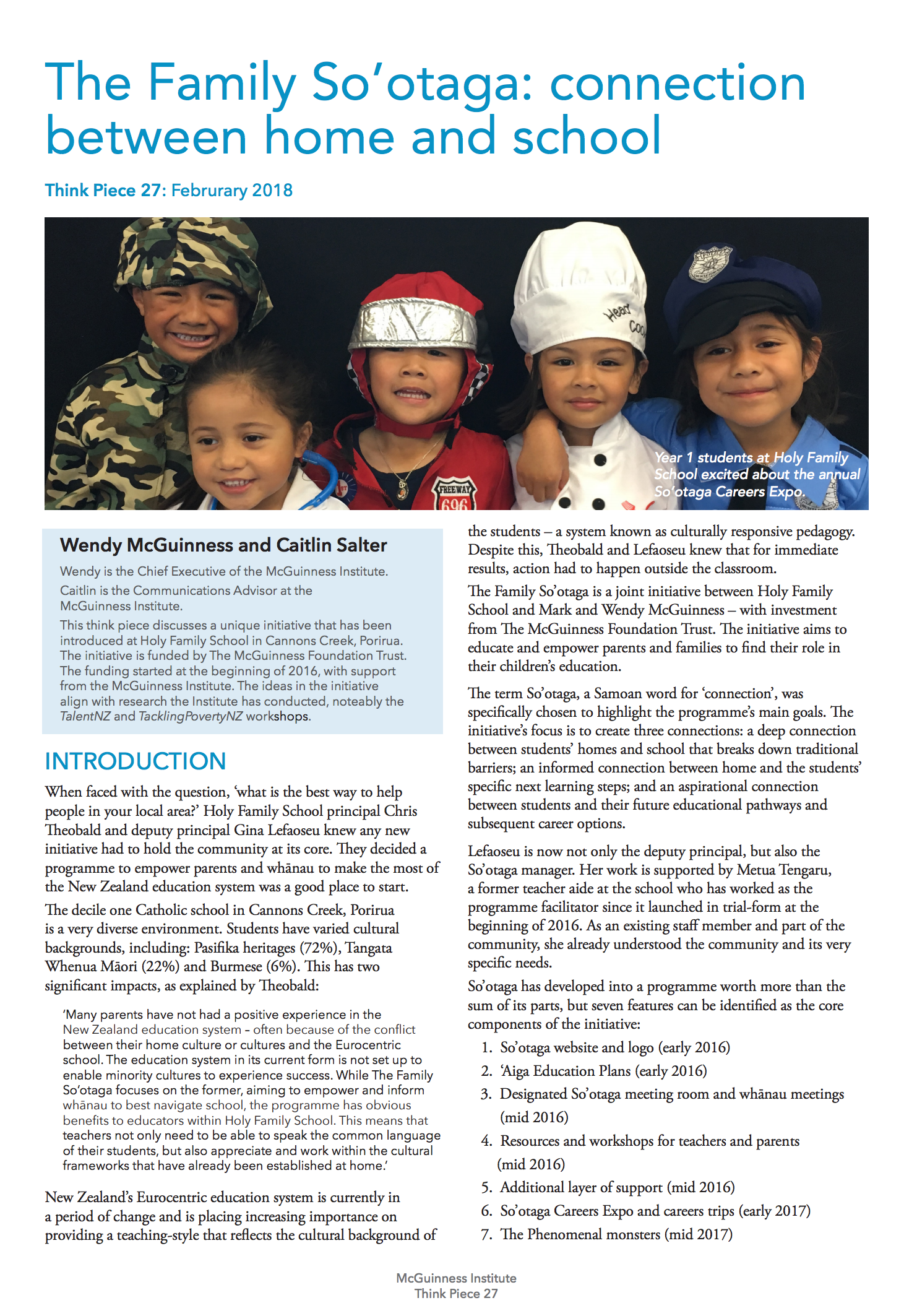An event held at Holy Family School in Cannons Creek on Tuesday, 20th February highlighted The Family So’otaga initiative, which was designed to provide more equitable outcomes for Māori and Pasifika learners and their whānau. Holy Family School pupils come from diverse backgrounds: 72% have Pasifika heritage, 22% are Tangata Whenua Māori and 6% of pupils are children of Burmese refugees.
Guests of honour at the two year anniversary milestone event included Hon Aupito William Sio, Minister for Pacific Peoples; Porirua mayor Mike Tana; and Mark and Wendy McGuinness. Board of Trustees chairman John Lafaele was also at the event.
The Family So’otaga is described by Holy Family School principal Chris Theobald as a bespoke initiative created by the school in collaboration with the McGuinness Institute: “It’s not an off-the-shelf product that we’ve imported. It was created by us, for our community. We are a very specific community – the majority of our community are minorities in New Zealand.”

Holy Family School students perform a song at the event.
The decile one Catholic school in Cannons Creek, Porirua has The Family So’otaga at its heart. The programme aims to create meaningful relationships with parents and whānau to break down barriers to learning. So’otaga is a Samoan word for ‘connection’ – chosen for its reflection of the main goals of the initiative:
• To develop deep connections between students’ homes and school that break down traditional barriers.
• To create informed connections between homes and the students’ specific next learning steps.
• To nurture aspirational connections between students and their future educational pathways and career options.
Deputy principal and So’otaga manager Gina Lefaoseu works with facilitator Metua Tengaru to run the wide-reaching initiative. A key part of the programme is the development of ‘Aiga Education Plans or AEPs (‘Aiga means family in Samoan). These are created during a series of meetings organised by Lefaoseu or Tengaru. During the meetings, reciprocal relationships are developed and goals are discussed. Official meetings are complemented by the open relationship between parents and the school; parents are invited to contact or meet with Tengaru or Lefaoseu whenever they need to. Tengaru identifies a subtle but important point about the AEPs: “We don’t make these plans for our families, we create them with our families.”
Workshops are also held for the parents on a wide-range of topics including: ‘how to ask teachers the hard questions’, ‘child brain development’ and ‘how to interpret school reports’.
The work with whānau is just one part of So’otaga. New resources for the students have also been developed to teach them the fundamental skills they need to learn and succeed. These include The Phenomenal monsters, Mr. Men-style characters each bearing key characteristics of a growth mindset.

The Phenomenal monsters Grit and Optimum.
At the event, Lefaoseu shared her four main lessons learnt over the last two years:
1. Don’t be perscriptive when meeting with families.
2. Don’t rush the process of building the relationships.
3. Don’t try and be a social worker, be a connector.
4. Be open for change – the programme needs to adapt to the community’s changing needs.
Theobald said all the programme organisers believe So’otaga to be working. This is evident in some of the changes they have observed in both parents and students. He elaborated by saying:
“For our Māori and Pasifika students, the traditional Euro-centric model of school can be a place of cultural dissonance. The confidence our parents have developed to engage with teachers and the school is a real highlight.”
While many of the positive results of The Family So’otaga are found in anecdotal evidence, there are also some encouraging results in the data. Using National Standards as a guide an average of 14%, 15% and 5% more children are achieving at an appropriate level in reading, writing and maths respectively. This is a substantial shift in a relatively short period of two years.
One of the most significant issues the school currently faces is rapidly increasing enrolment numbers. After 15 years of slow but steady decline in enrolments, in 2016 the school has had a 240% increase (averaging 32 new students over the previous five years, compared to 77 new students in 2017).
Theobald notes: “To go from that steady decline to that sharp increase is quite significant. Many of our new parents tell us they decided to send their children to Holy Family because it was recommended to them. More often than not the reason for that is The Family So’otaga. They see us [the teachers] as their equals and they know their children will succeed here.”
The So’otaga event concluded with the Minister, Mayor Tana and Wendy McGuinness forming a panel to answer questions and share their insights on the programme’s relevance.

Wendy McGuinness, Hon Aupito William Sio and Mayor Mike Tana.
The Mayor said So’otaga helped lay the foundation for the students to feel pride in their heritage. He explained that “So’otaga doesn’t look that different from what we talk about when we say ‘it takes a village to raise a child’, but you’ve applied that principle here at [Holy Family School] and taken it further out into the community. I think that that is how a family and a village should work, but often we don’t apply the same model in a school sense. The really neat thing about So’otaga is you are highlighting the role models within these children’s own community.” He also acknowledged local government’s role in holding the central government to account, and informing central government of the key concerns of their communities.
The Minister spoke about his own experience living in ‘two worlds’ as a Samoan New Zealander. He appreciated the So’otaga’s acknowledgement of Holy Family School students experiencing a similar situation:
“The thing that I like about So’otaga is the recognition that there is another world that these kids are living in. This is a really good starting point. As a Samoan New Zealander, my extended family live in the Samoan world and negotiate the palagi world on a day-to-day basis.
“I believe this model can be replicated, and the essential part of it is the key people, like the principal, deputy principal and facilitator. What now needs to happen is for the government to provide an encompassing supportive role, to make sure you achieve the goals of the project.
“The new government is clearly focused on health and education and we recognise that Māori and Pasifika in particular will be relied upon in years to come. If they’re not prepared in terms of education, they could easily be swept under the carpet while the country takes on workers from other parts of the world.”
To learn more about The Family So’otaga, read in the Institute’s latest think piece published here.

